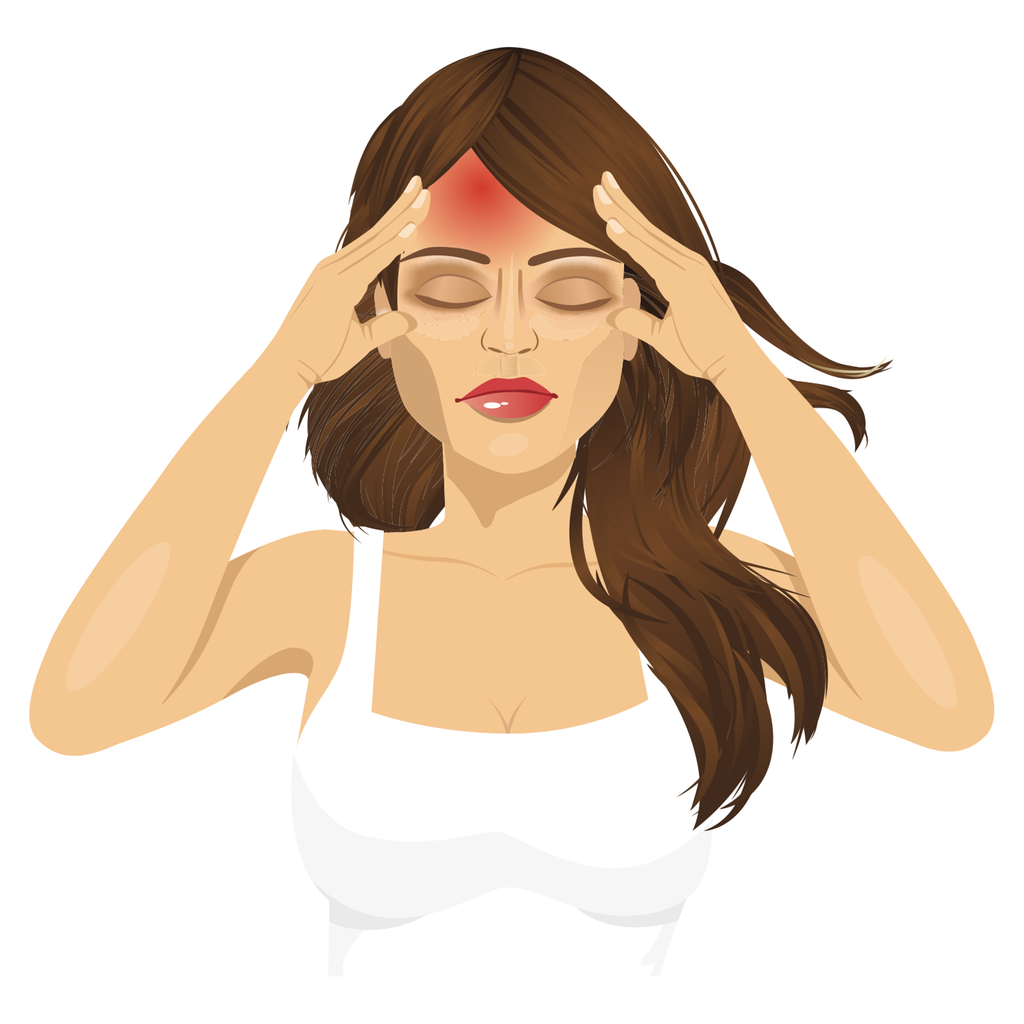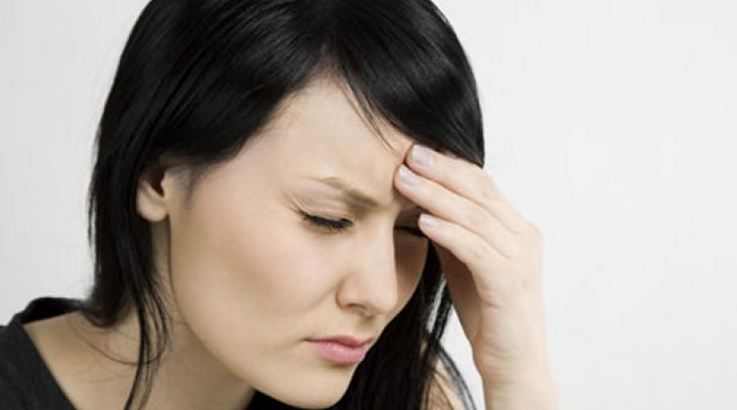How to get rid of a migraine fast? Statistics indicate that migraine is one of the top twenty most disabling conditions. One of every four households in the U.S. has at least one diagnosed case of a migraine. Thus, it is not surprising that more and more people are looking for ways to get rid of a migraine. Luckily, there are many proven remedies that can help with this problem.
About a migraine
If you have been experiencing an excruciating headache accompanied by blurry vision and nausea, then in all probability you are suffering from a migraine.
According to http://www.patient.co.uk/health/migraine when migraine is associated with an aura, the condition is classified as ‘common migraine’. On the contrary when headaches surface without an aura they are better connoted as ‘classical migraine’.
Mechanics demystified
The temporal artery is located just under the skin in the temporal region. When the temporal artery dilates, it can stretch the nerves which are present in close proximity. This will lead to inflammation and irritation of these nerves.
As the temporal artery enlarges and dilates further, the inflammation of the nerves aggravate leading to severe pulsating migraine headaches.
The cause
It is more than evident that if you would like to get rid of these intense headaches, it is important that you understand the cause. Studies have now concluded that a migraine can be caused by some or more of these factors:
Genetic
Migraine is known to run in families. Experts believe that an inherited gene is known to cause a migraine attack. This is more than validated by the fact that one or more family members may have been diagnosed with a migraine.
The hormonal perspective
Hormones and headaches enjoy a correlation; women are more prone to migraine headaches as compared to men. Clinical studies indicate that migraine is four times more common in women as compared to men. This could be attributed to the fact that low levels of female hormones like oestrogen and progesterone can trigger an attack of a migraine.
The tyramine connect
Observational studies have now confirmed that some specific food options like cheese, smoked fish, and beer can trigger an attack of migraine in apparently healthy individuals. These food options are known to be a rich source of tyramine and the chemical is a trigger for a migraine.
The medical logic is fascinating, scientists have now confirmed the fact that this chemical is known to trigger the nerve endings in the brain to increase the secretion of yet another brain chemical known as nor epinephrine. These brain chemicals are known to initiate migraine attacks in apparently healthy individuals.
Sleep Disruption
The association is not new, scientists have been researching the relationship between sleep and migraine for the last hundred years. It has been concluded that lack of sleep can increase the frequency and intensity of migraine attacks.
All that you may need to do is to ensure eight hours of sleep every night. Avoiding television viewing or listening to music in bed and most importantly maintaining a gap of four hours between dinner and bedtime.
Signs and symptoms
More than 30 million Americans suffer from this debilitating headache at any point of time. The migraine is essentially a pulsating headache which may be limited to one side of the head. Physical activity could further aggravate the symptoms.
A migraine is common than one would believe and is one condition which needs to be diagnosed early for an effective treatment. If you have been experiencing some or more of these symptoms, you could arrive at an early diagnosis without needing to opt for specialized tests:
The aura
A visual display of flickering lights and jagged lines which last for five minutes to an hour are suggestive of an aura. These auras are important considering that typical migraine headaches would invariably follow after a ‘skip period’ of one hour after the start of an aura.
The aura associated with a migraine is better defined as psychedelic images which are potentially harmless, however they can make it difficult for one to drive or read. Migraine headaches with aura or ocular headaches are common and arriving at a diagnosis is relatively simple for evident reasons.
Mood fluctuations
If you should begin to experience mood fluctuations with a feeling of depression or alternatively have a ‘high’ without any elicit able cause, there is a distinct possibility that this may be followed by an attack of a migraine.
The pain
According to experts, the predominant symptom is a throbbing and pulsating headache which is invariably limited to one side of the head. Studies indicate that more than 50% of people diagnosed with the condition usually experience these symptoms during an attack.
An eye strain or a migraine
When one experiences an excruciating pain which appears to be localized to the region behind the eyes, it is often mistaken for an eye strain. If you ophthalmologist has excluded an eye fatigue or strain and the pain persists, it could well be a migraine.
Neck pains
On the contrary if you have been experiencing neck stiffness or pain before a headache, you may well be experiencing an attack of migraine. Statistics indicate that 75% of migraine attacks are usually associated with neck pain.
Experts are of the opinion that this is attributable to the fact that the nerves which connect the neck to the head are irritated and inflamed. Thus it could well be surmised that neck stiffness or pain may radiate to the head where it may then present as migraine.
Altered Sleep
The inability to fall asleep or waking up tired in the morning could be closely associated with a migraine. Observational studies in recent times have concluded that altered sleep patterns are usually linked to increasing frequency and intensity of migraine attacks.
Experts believe that if sleep disorders are reversed, the frequency of migraine attacks may be significantly controlled without the need for repeated follow ups.
Sinus headaches
90% of patients would present with sinus headaches, stuffy nose and increased watering from the eyes. If one begins to experience these symptoms, the probability of contracting a migraine headache is high.
How to get rid of a migraine fast and naturally
Contemporary medications can help, however the condition can also be treated and even reversed using some or more of these alternative strategies and options:
Quick response
Considering the chronic and repetitive nature of migraine attacks; some would ignore early symptoms and may even avoid treating the pain. This could be dangerous once the intensity of the pain increases, the probability of reversing the symptoms is low.
Hydrate for health
If the cause is dehydration then the pick of options is to consume plenty of fluids like water. Naturalists believe that drinking a glass of water early may help minimize the intensity of an attack.
Concurrently, experts advocate continuous consumption of water throughout the day. This may be supplemented with electrolyte impregnated drinks such as sports drinks.
On the contrary, beverages and mixes such as aerated drinks and alcohol are best avoided as they can prove to be counterproductive. Alcohol can lead to severe dehydration and further aggravate the symptoms of headache and nausea.
The caffeine reversal
If you are not a coffee addict and consume the beverage sparingly, then a cup of coffee could reverse the symptoms very early. Coffee is a rich source of caffeine, and caffeine is a central nervous system stimulant which can control the condition.
However, caffeine can work as a double edged weapon. If you are a habitual coffee drinker then caffeine may aggravate your symptoms rather than reversing the pain.
Compress options
One quick and convenient option is to apply a hot compress locally over the area for maximum pain relief. The probability is that the headache will begin to subside over the next few hours.
Although, hot compresses have returned some very encouraging results in recent times, it is advocated that a hot compress should not be used with balms or creams. Hot compresses are similar to pain relieving creams, thus the benefits may be neutralized and one may wonder if the treatment is effective.
Numbing options
While hot fomentation is effective, cold compresses are even more beneficial provided that one starts the treatment early and applies ice packs directly over the affected area.
Studies in recent times have now advocated that using hot and cold compresses in tandem may prove to be relatively ineffective. Thus, the rule of the thumb is to use either of the two and avoid using both options concurrently.
Walk for health
Studies have shown that migraine headaches respond favorably to walks. Taking a leisurely walk can help control the symptoms provided that these walks are initiated early.
Sleep options
To reiterate the case in point, lack of sleep can trigger an attack. People diagnosed with migraines should ensure eight hours of sleep and regular sleeping patterns. This may include getting to bed at the same time every night and taking a warm water bath or relaxing with family before bedtime.
Naps would well need to be limited to a max of 30 minutes. When day naps are taken, the probability of sleeping better at night is lower and the probability of triggering an attack is higher.
Apple cider vinegar
A nutritional powerhouse of repute, apple cider vinegar (ACV) is known to reverse attacks and continues to be the preferred option for those seeking quick relief of symptoms.
A tablespoon of apple cider vinegar dissolved in a glass of water and flavored with one tablespoon of honey, makes the perfect mix for a quick reversal of symptoms.
In case you experience an aura, increase the quantity of apple cider vinegar to two to three tablespoons. This may help prevent an attack or at worst minimize the intensity of pain.
The peppermint release
A drop or two of peppermint oil rubbed into the temples could well lead to a quick relief. When complemented with a peppermint tea and flavored with honey for taste, the mix could well return encouraging results.
Peppermint is a strong anti–inflammatory drug which can soothe irritated nerve endings. Conversely, if the cause is spasmodic, peppermint is even more effective considering that it is a strong anti – spasmodic ingredient.
The cayenne option
Cayenne pepper is an extremely popular anti-migraine remedy, it can enhance the circulation of blood in addition to improving blood flow. The presence of capsaicin makes it the perfect antidote for pain as it contains an important ingredient known as capsaicin.
Ginger health
Prostaglandins (hormone like substances) can lead to increased contraction of muscles as well as altering the hormonal levels in the body. Concurrently prostaglandins can even precipitate the inflammation of blood vessels located in the brain tissue thus leading to severe migraine attacks.
Ginger is one wonder option which can effectively block the secretion of prostaglandins and can reverse the effects significantly.
Feverfew relief
Feverfew is not new to mankind, this unique herb has been used to reverse migraine attacks since centuries. The herb contains an important compound called parthenolide which can prevent inflammation and relieve spasms in smooth muscles. Feverfew can even neutralize the release of prostaglandins and relieve a migraine pain quickly.
The mix can be prepared by mixing a tablespoon of feverfew with an identical quantity of peppermint powder. This is then steeped in a cup of boiling water for thirty minutes. Strain and consume as often as required and watch that pain subside.
The massage alternative
If you would like to go even more ‘natural’ then opt for a massage therapy. There is more to massage therapies than mere psychological relief. When you massage the temples; you blocking the sensation of pain which is being transmitted to the brain.
The therapy is known to stimulate the release of serotonin. Relieving the pain and minimizing the frequency of attacks.
The strategy
When migraine attacks are preceded by diarrhea and vomiting, treating these symptoms could well help prevent or minimize a migraine headache.
References:

